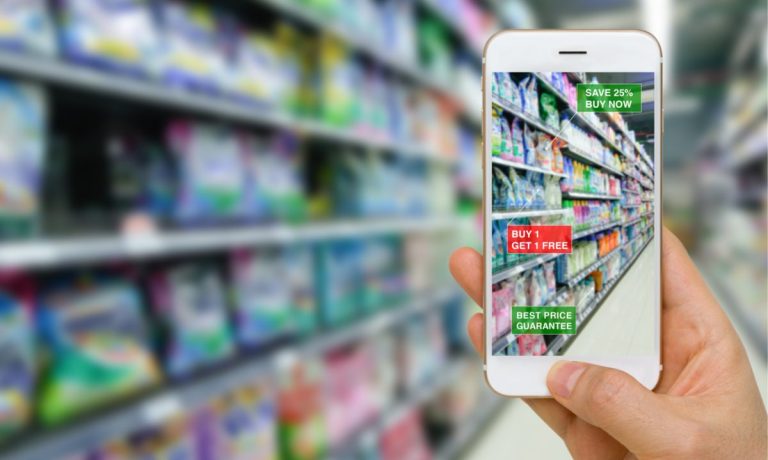
In the “Benchmarking the Digital Transformation” report, PYMNTS found that 83% of Brits owned a smartphone, the second highest when compared to data from the other 10 countries studied.
That same report revealed that a third of online U.K. consumer transactions used a mobile wallet, which also accounted for 18% of in-store payments.
Read the report: 2022 Global Digital Shopping Index
And yet, as the latest PYMNTS Digital Shopping Playbook reveals, the cross-channel or hybrid approach to retail that uses mobile devices to enhance and assist in-store shopping is not as widespread in the U.K. as it is in other countries.
See also: UK Leads Europe in Internet Access, Second in CE Index, Study Finds
The research found that British shoppers use smartphones 16% less than consumers in other countries to enhance their in-store shopping experiences. This represents an odd anomaly in a country that is typically very open to mobile technology.
Read more: New Data: Mobile Shopping Still Underutilized by UK Consumers Despite Merchant Efforts
AR and Physical Retail: A Promising Avenue for Commerce
While the growth of smartphone-enhanced shopping appears to have plateaued in the U.K., that hasn’t stopped the country’s pioneering retailers from forging ahead with one innovation in mobile ShopTech: augmented reality (AR).
When Apple opened a new flagship store in London last month, it celebrated the launch with an AR experience that focuses on London poet and painter William Blake, created for Getty Museum using Apple’s technology.
The collaboration is another example of Apple’s ongoing interest in AR, as stated on its U.K. website: “Apple has the world’s largest AR platform, with hundreds of millions of AR‑enabled devices, as well as thousands of AR apps on the App Store. And because Apple hardware and software are designed from the ground up for AR, there is no better way to experience it.”
Related: Apple Kicks Off WWDC with an Eye on Connecting Everyone, Everything
Apple is not the only company using AR to enhance the in-store retail experience in the U.K. Some notable examples include the high-end department store Harrods, which used AR technology in its Christmas 2021 window displays, as well as the global pioneer in AR-powered in-store fun — Lego — which has run a number of AR campaigns over the years.
That said, there are other ways besides AR that U.K. consumers are being prodded to embrace mobile devices in their brick-and-mortar shopping.
Apple’s new London store is also home to the U.K.’s first Apple Pickup area, which allows customers to order products online and have them waiting at the store. Here too, The Digital Shopping Playbook found that the U.K. lags behind other countries in the adoption of in-store collection, with U.K. consumers being 8x more likely to use delivery than in-store pick up.
Ultimately, smartphone-assisted shopping is still in its infancy. Despite sluggish adoption in the U.K., there are promising signs that technologies like AR will be able to further excite consumers and stimulate their usage of mobile devices in physical retail.
In fact, research by Bazaarvoice found that 48% of U.K. consumers want to see AR/virtual reality (VR) in physical stores — but how AR will be applied to in-store retail in the future remains unclear.
See also: Walmart’s New AR Tool Drives Shopping Personalization
In the parallel world of eCommerce, however, many apps and websites now offer AR “virtual fitting rooms” that allow users to try out items using augmented reality. Likewise, companies like Ikea use AR to help people envisage what home furnishings will look like in their rooms before they buy.
Read more: FaceCake, Company.Com Collaborate on ‘Self-Serve’ AR Commerce
These kinds of use cases offer a glimpse at what the future of AR in physical retail may look like.
While Apple’s, Harrods’ and Lego’s mobilizations of the technology are entertaining, they don’t have the same practical implications on the way people shop as AR has had in eCommerce. Nevertheless, as AR is increasingly utilized in all areas of retail, it will likely continue to play an increasing role in brick-and-mortar shopping.
For all PYMNTS EMEA coverage, subscribe to the daily EMEA Newsletter.